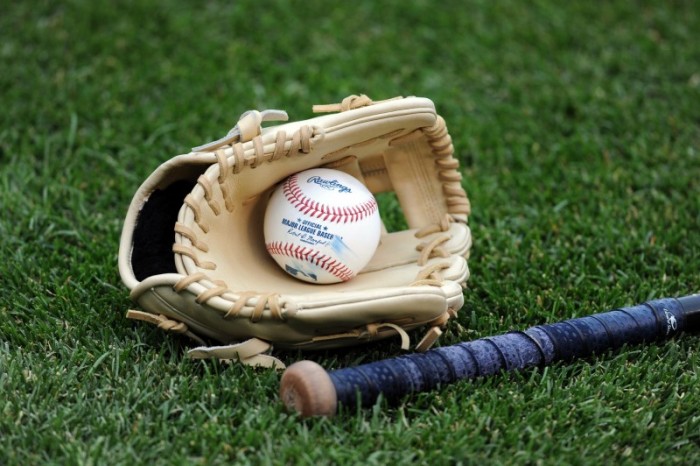The MLB Draft is a time of optimism. Ask an average fan, and their team’s first five or so picks are guaranteed to be future stars. Even in the later rounds, most selected players offer something to dream on: 70-grade raw power in spite of a nonexistent hit tool, say, or a promising fastball that never finds the strike zone. The Brewers selected many such players earlier this month; as they continue to sign professional contracts, the system will enjoy a significant infusion of upside.
Of course, the draft isn’t the only way to add upside to the farm. Lost in the prospect explosion was this minor move: On June 2, the Milwaukee Brewers purchased the contract of 6’0” 27-year-old righty Danny Reynolds from the Sugar Land Skeeters of the independent Atlantic League.
For many prospects, the independent leagues are the last stop on the way out the door, a skewed simulacrum of a dream that’s about to slip permanently out of reach. For others, these leagues are a place to re-establish value or open new eyes. Danny Reynolds didn’t want to end up pitching in the independent leagues. Few players want to end up in the independent leagues. But for Reynolds, the decision made a certain amount of sense.
Originally drafted as a high schooler by the Los Angeles Angels in 2009, Reynolds was part of what might be the best draft class in the last decade. Before his name was called, the Angels had already selected Randal Grichuk, Mike Trout, Tyler Skaggs, Garrett Richards, and Patrick Corbin. Reynolds didn’t appear very interested in adding his name to the big league ledger, racking up just 34.3 innings of rookie league ball before failing a second test for a drug of abuse and sitting out the first 50 games of the 2012 season. (When he did get back on the mound, Trout was on his way to an 8.6 WARP rookie season.)
Even so, Reynolds offered the Angels a glimmer of hope. He rebounded to reach high-A ball at the end of 2012, then scuffled as he repeated that level in 2013. When he moved to the bullpen in 2014, he turned in his finest professional season to date, recording a cumulative 2.90 ERA and 9.1 K/9 across high-A, double-A, and triple-A. The Angels added him to their 40-man roster that fall; five solid months could have put him in contention for a September call-up.
Things didn’t work out that way. Reynolds regressed in 2015, issuing walks at a higher rate than ever before (5.8 BB/9 across 43.3 double-A innings). In the course of one offseason, he was waived by the Angels, claimed by the Dodgers, designated for assignment, claimed by the Astros, and DFAd again before landing back with the Angels. He found the strike zone even less frequently in 2016, handing out 24 walks in 33.7 innings before being released on June 30. He finished the year in the independent American Association league.
Reynolds signed with the Atlanta Braves before 2017, and spent most of the season back at AA, where he managed 4.8 walks per nine innings en route to a decidedly mediocre 4.99 DRA. Even though the surface level results were good (3.26 ERA in 58 innings, followed by a three-inning trial at triple-A to close the year), Reynolds knew he faced a steep climb to the majors, as the Braves are arguably the most pitching-rich organization around. So he elected and was granted free agency in November of 2017 and wound up languishing through the slowest offseason ever. In the end, he signed with the independent Skeeters and pitched well enough for the Brewers to take a chance and send him to Biloxi. Another stint in the indy leagues can make the prospect of a fifth consecutive season at double-A a little more appealing.
Reynolds, too, seems more appealing these days. At 27, he’s seemingly past the immaturity that jeopardized his career before it really got started. And while the independent leagues are a far cry from affiliated ball, he only walked two batters in 15 innings with the Skeeters.
Reynolds pitches from a three-quarter arm slot. His calling card has always been velocity; he can dial up his fastball to the upper-90s with a varying degree of arm-side run. When he’s on, it’s a great pitch, tying up right-handed hitters and diving away from lefties. When he’s not, it might end up anywhere within a four-foot radius of the strike zone, including right down the middle, with no arm-side run to speak of. Reynolds also possesses a slurvy breaking ball that has at various points flashed above-average. It’s been on a plateau for a few years, though, and will need to develop some consistency in order to carry Reynolds further up the organizational ladder.
Entering Sunday, through three appearances and four innings with the Shuckers, Reynolds has a pristine 0.00 ERA and seven strikeouts against just one walk. Given his combination of velocity and stuff, he may yet have a future as a middle-innings reliever. Of course, the Brewers have a stacked bullpen, with more capable arms than available roster spots. The only way Reynolds will pitch in Milwaukee is if disaster strikes. Unless he’s turned a corner mechanically and the command is here to stay. Years of inconsistency caution against counting on such a change. Then again, this is baseball we’re talking about. Stranger things have happened. Keep an eye on Reynolds this summer: he’s just the kind of underdog Stearns has targeted in the past. Sooner or later, one of them is going to surprise us.
